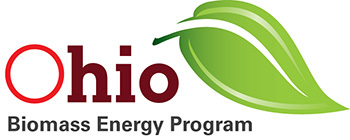FW: EPA Releases Best Practices Document for Siting Solar Photovoltaics on MSW Landfills
Public Utilities Commission of Ohio sent this bulletin at 02/26/2013 12:22 PM EST
Having trouble viewing this email? View it as a Web page.![]()
The U.S. EPA's Landfill Methane Outreach Program (LMOP) is pleased to announce to its Partners and other interested parties that the EPA's RE-Powering America's Land Initiative and the U.S. Department of Energy’s National Renewable Energy Laboratory (NREL) have released the document, "Best Practices for Siting Solar Photovoltaics on Municipal Solid Waste Landfills."
Through the RE-Powering America’s Land Initiative, the EPA is encouraging renewable energy on potentially contaminated land and landfills when it is aligned with the community’s vision for the site. In order to respond to the increasing demand for assistance with siting solar energy projects on landfills, the EPA and NREL partnered to prepare "Best Practices for Siting Solar Photovoltaics on Municipal Solid Waste Landfills.” The document includes examples of solar photovoltaics (PV) projects on landfills and provides best practices to address various technical considerations when determining the feasibility of a solar PV project on a landfill.
Closed landfills and portions of active landfills with closed cells represent thousands of acres of property that may be suitable for siting solar energy projects. Many landfills are particularly well-suited for solar development because they may be:
- Located near critical infrastructure, including electric transmission lines and roads
- Located near areas with high energy demand
- Constructed with large areas of minimal grade
- Offered at lower land costs compared to open space
These landfills may be appropriate for near-term construction, making these sites strong candidates to take advantage of the 30% Federal Business Energy Investment Tax Credit. Coupling solar energy with landfill gas (LFG) projects may be particularly advantageous because of shared infrastructure upgrade costs and planned expansion of the solar energy system as LFG production decreases. This type of co-generation strategy may offer a unique value proposition for landfill sites relative to open space and improve overall project economics.
Yesterday’s EPA Greenversations blog featured the EPA Region 2 Solar Team’s work to conduct feasibility studies at 10 closed municipal solid waste landfills in New Jersey. To learn more about their efforts, please read the blog post and contact a member of the team.
As part of the document release, the EPA’s Office of Solid Waste and Emergency Response is hosting a discussion forum on solar on landfills. Join the conversation!
Questions about the document or the Re-Powering America’s Land Initiative may be directed to a member of the EPA's RE-Powering Rapid Response team. General comments should be submitted to cleanenergy@epa.gov.
